Chapter 1: Blood Feather of a Northern Flicker is based on my struggle with metal intoxication and my efforts to rebuild the ruin that I had become.
Chapter 2: Bodies of Water is chapter two and inspired by living in Italy and finding the sources of our drinking water.
- TitleBlood Feather
- Type(s)Painting, Sculpture, Light
- AgendaWater & land
- Year(s)2016–2022
- LocationNew York, Italy
- ReferencesThe Burnout Society, Byung-Chul Han, Alexander Calder
1 Blood Feather of a Northern Flicker
In the fall of 2016, my body began to fall apart. I was suffering from heavy metal toxicity, adrenal fatigue, burnout, respiratory problems, muscle weakness, and brain fog. I felt as though I couldn't move, my legs weighing me down like twisted steel. Even reading was an effort—I would scan the same paragraph over and again without once being able to turn the lines on the page into meaning or sound. Slowly, I tried to cleanse my body with different regimens, all while drinking water solely from glass bottles to avoid all risk of contaminants.


On my way to the studio one morning, I found a northern flicker that couldn’t fly and could barely walk. I took the bird to a nearby animal hospital, where she died a few days later. I felt that the bird was me, mirroring my own body’s sharp decline.
Later, I found myself looking at the feather she left in the box that I used to transport her. The shaft of the feather was filled with blood, still in the process of growing when it fell out prematurely. Over the course of my own recovery, I thought often of the northern flicker, which became—in my mind—a symbol for my own unruly body.






For the five years before my symptoms began, I had lived in a Brooklyn loft—slightly sketchy, not up to code, definitely illegal. Though I have never been able to confirm it, I have wondered whether the pipes in that building were what prompted my own physical decline. Often invisible behind the walls of a building, water pipes and electricity cables are like the lifeblood of a building. When the body of my home became contaminated, so too did I.










Extending the metaphor that links my physical self to the structures that hold me, this collection is assembled from architectural fragments, including corroded water pipes, alabaster remnants, and the twisted remains of structural I-beams. I bound these ruined materials together with wire or roller-chain, a material which—like my body—bent one direction, flows beautifully, and the other, torques and can be put under severe duress.








Materials
Blue wax, copper plates, copper pipes, copper wire, drywall, nails, roller-chain, steel I-beam, oil on canvas, Bonotto fabric on canvas, feather, alabaster stone, radiator
2 Bodies of Water
As discussed in the earlier project, from 2016 to 2020, I suffered from heavy metal toxicity caused by contaminated water. I had little energy, poor focus, and troubled breathing. While recovering, my doctor advised that I only drink from glass bottles to avoid any further exposure, and I complied, even though I hated the wastefulness of this type of consumption. However, for the many people who live in cities with lead pipes or poor filtering of municipal water, this is an unceasing and unavoidable part of life. In 2017, more than 884 million people worldwide did not have access to clean drinking water. My own experience with toxic water has made me keenly aware of the preciousness of this resource in spite of its apparent abundance in the United States.
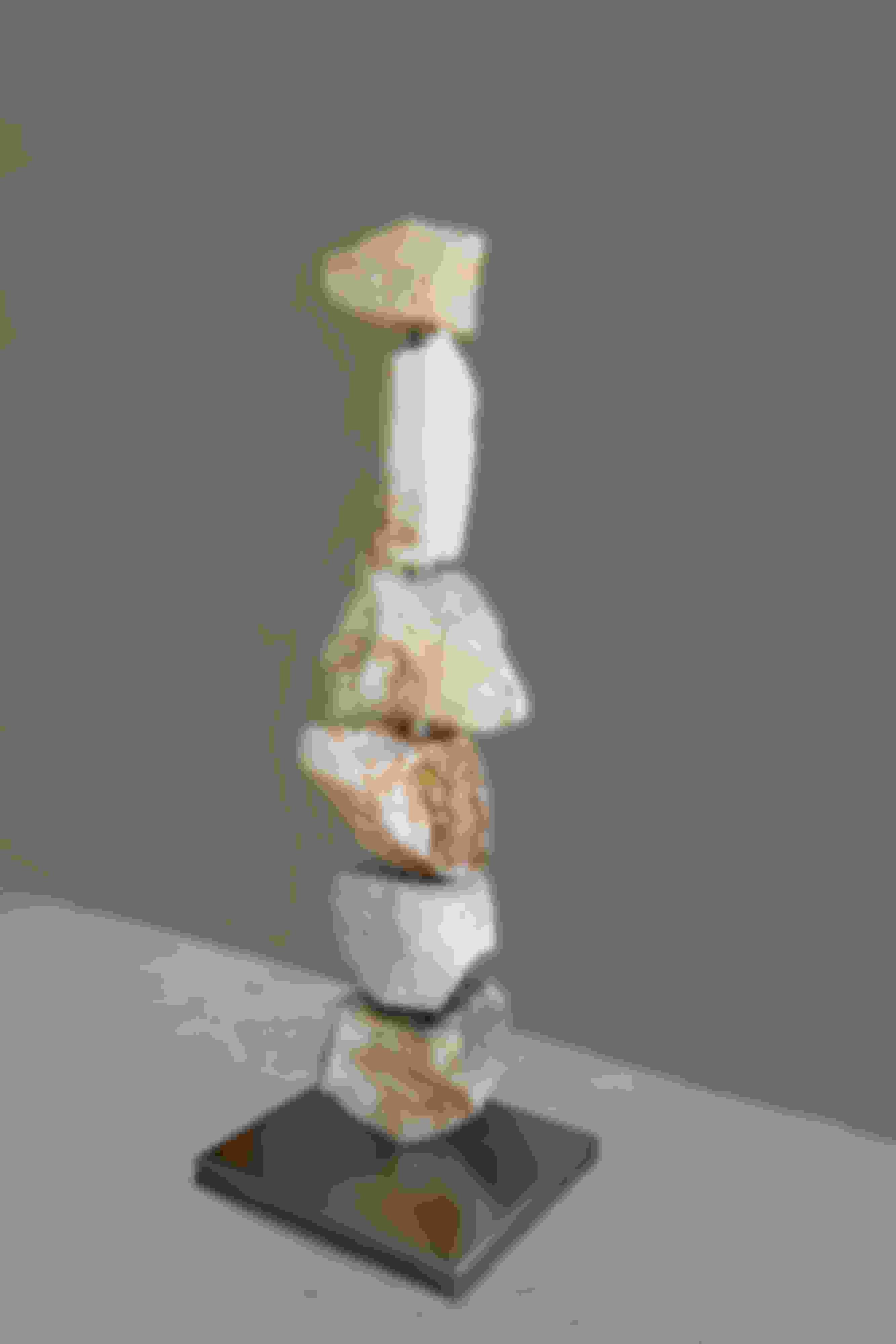

Bodies of Water traces part of the water cycle from icy lakes replenished by snowy mountain runoff to streams as they become rivers and the rivers as they flow out to sea. A series of rocks are stacked and mounted upon a metal fountain spigot affixed to a square base. The series is inspired by the “nasoni”—named for their hooked, nose-like spigots—which are scattered throughout the streets of Rome, providing free drinking water to residents. Like this reference point, when my stone fountain is activated, potable water spills from the spigot into the user’s reusable glass or bottle. Installed near Italy’s coastal beaches, this series of water fountains creates a dialogue between different points in the water cycle—river rocks with filtered freshwater and the salty ocean spray—while also providing safe drinking water to local residents. The fountains are accompanied by a series of lamps which are hand-chiseled from semi-translucent stone.

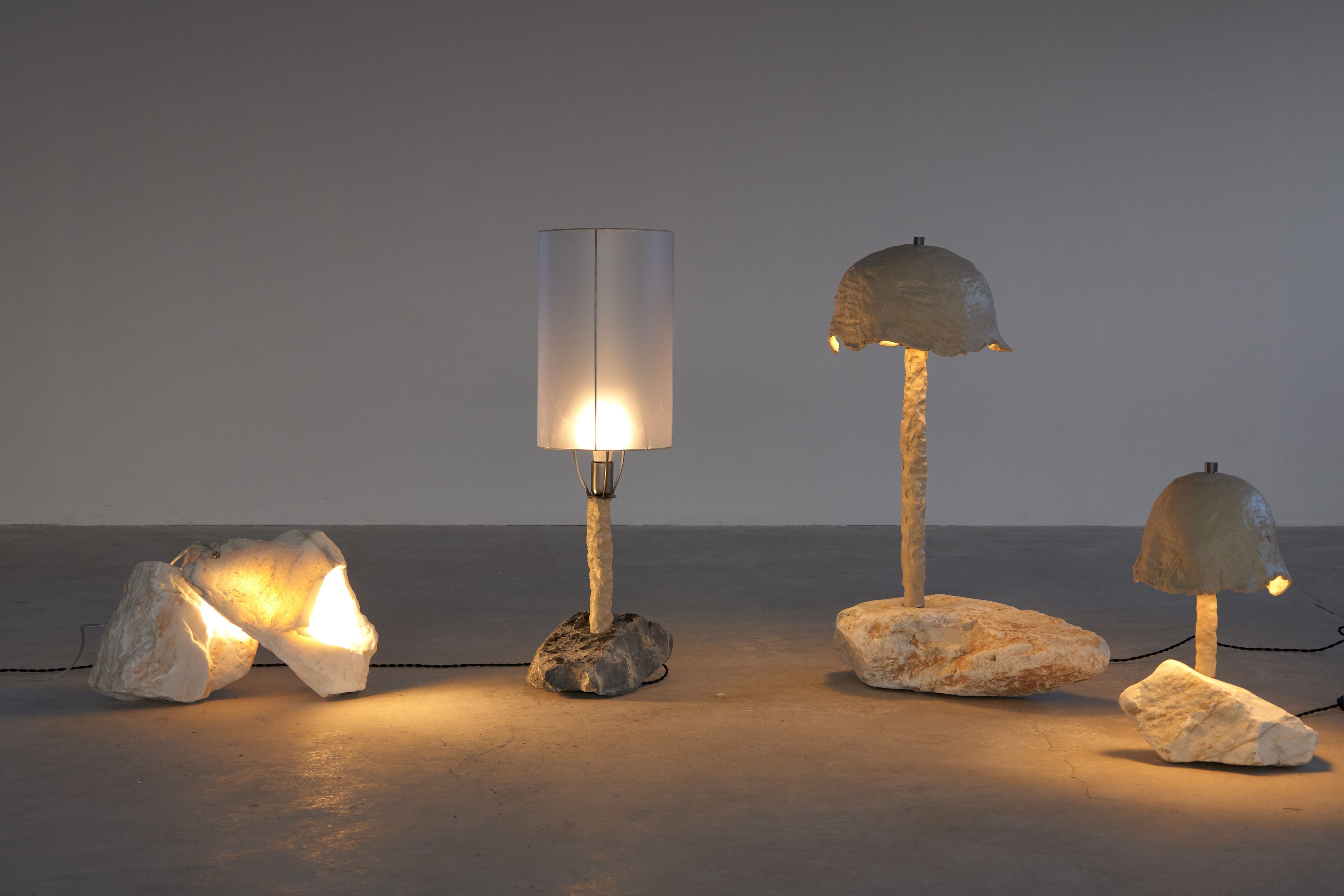
These works also address humankind’s attempt to control or harness the power of water through juxtapositions of the man-made and the natural. The fountain, for example, uses found stones from Carrara which have been artificially ground down and burnished on one side, evoking river rocks naturally polished by the water current, while the other preserves the craggy surface created during the quarrying process. A visual rhyme is made between these smoothed planes of stones and a melted hunk of black and white plastic, which suggests the tons of plastic waste that go un-recycled each year. A video and an additional series of photographs emerge from visits to the man-made Lago di Cadore, created in the 1950s with the construction of the Pieve di Cadore hydroelectric dam, as well as to natural lakes and rivers throughout Italy.
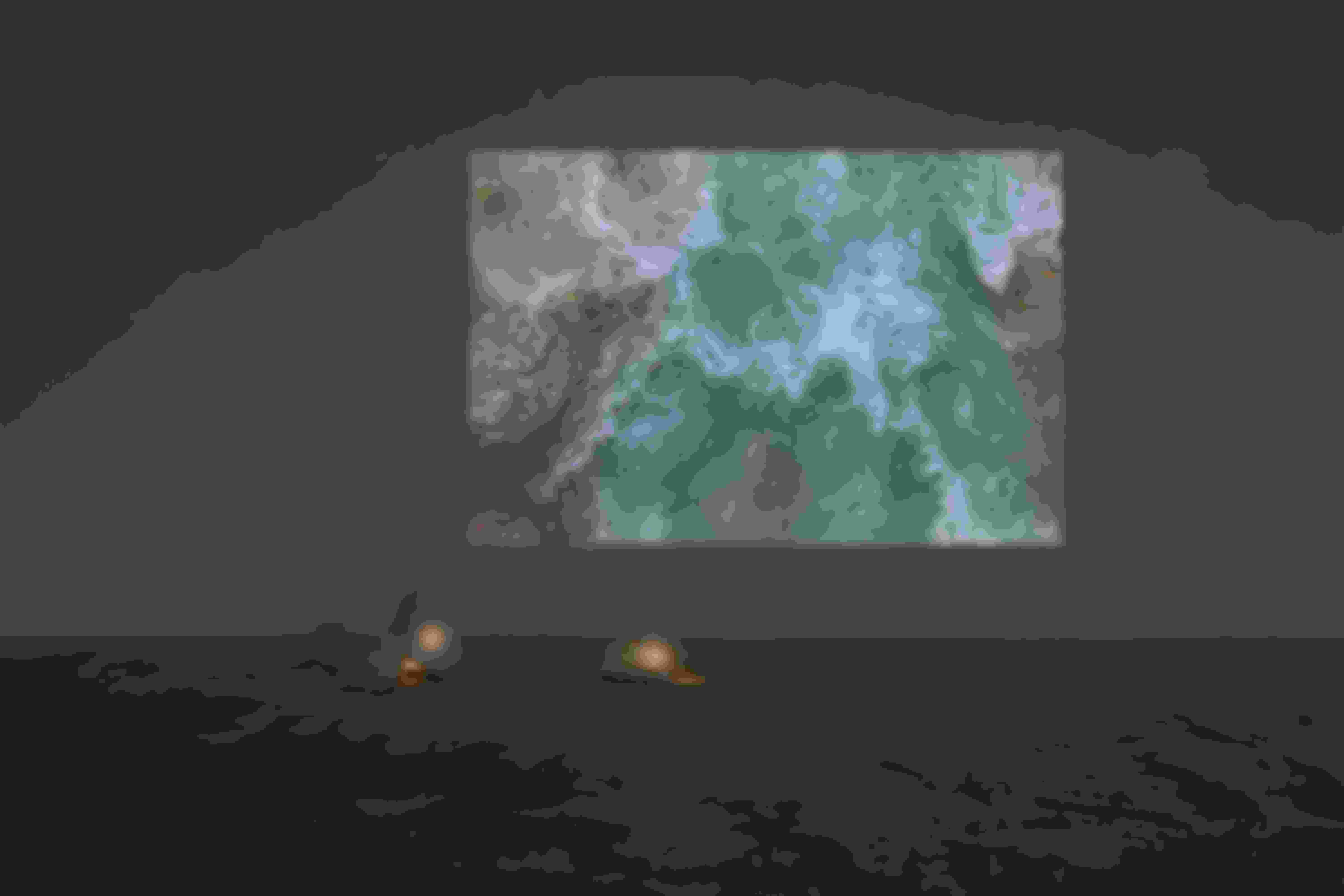
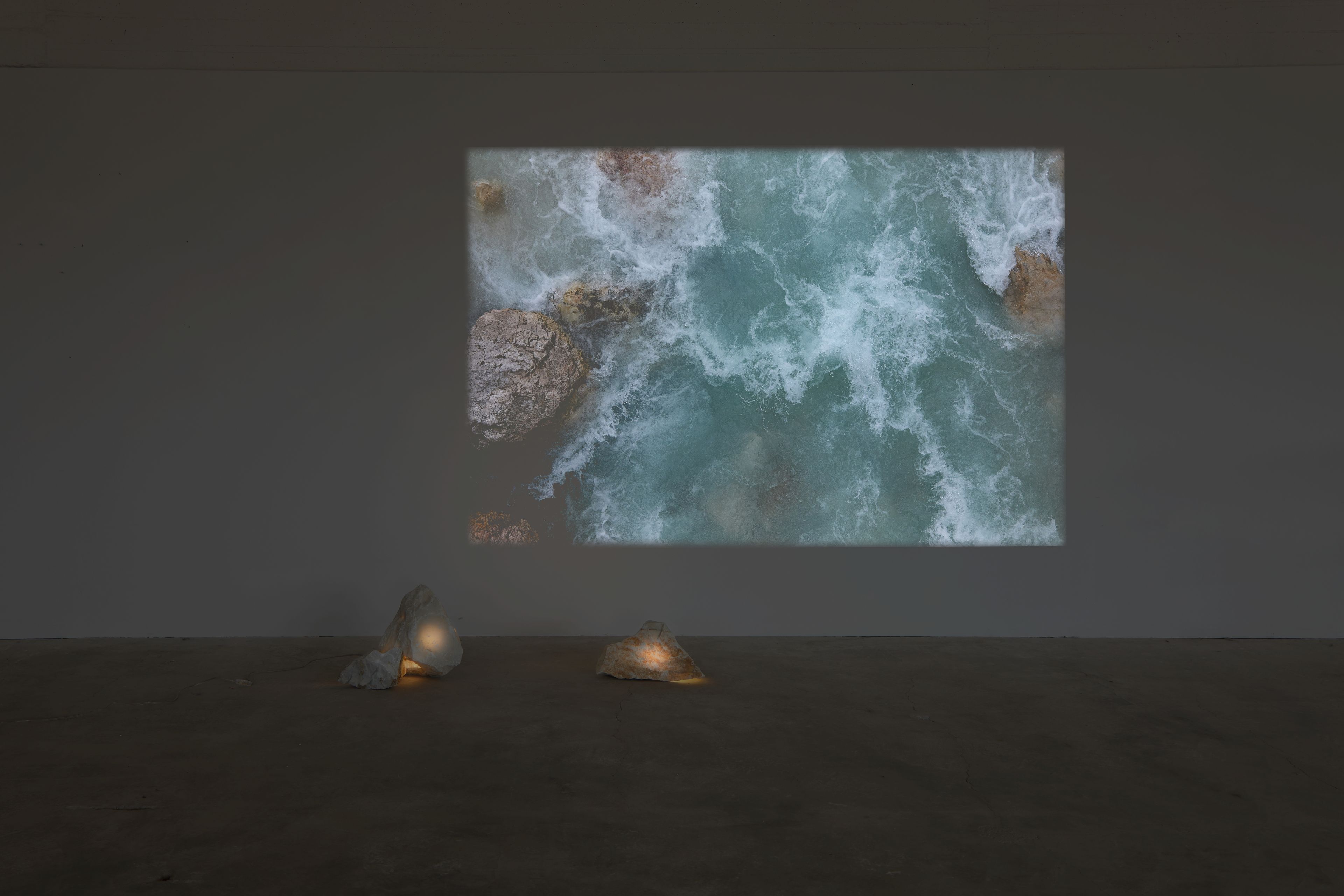
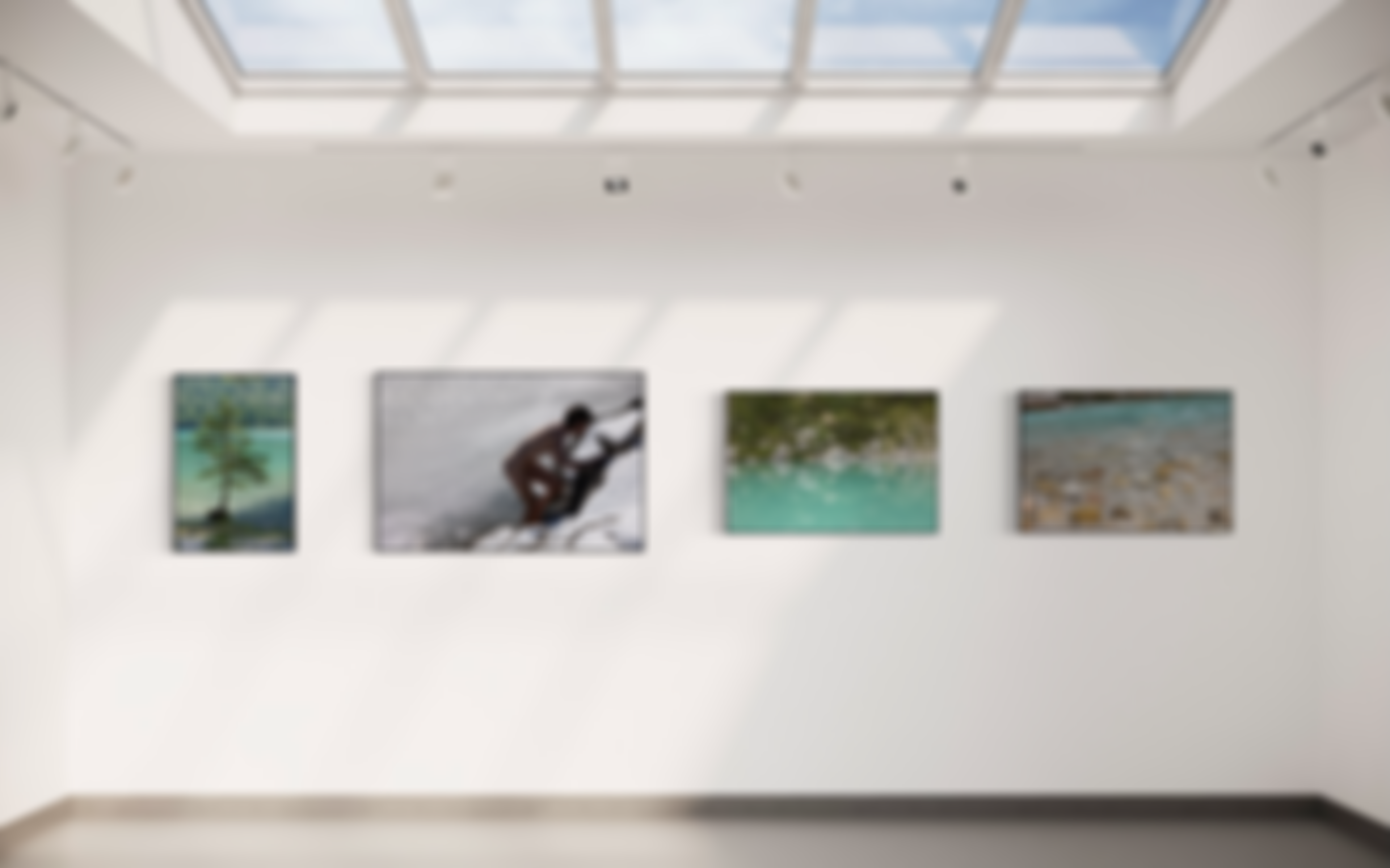

Editor
Nicole Kaack is a curator, writer, and archivist. Her writing has been published by Artforum, BOMB, Art In America, The Brooklyn Rail, and Sound American.